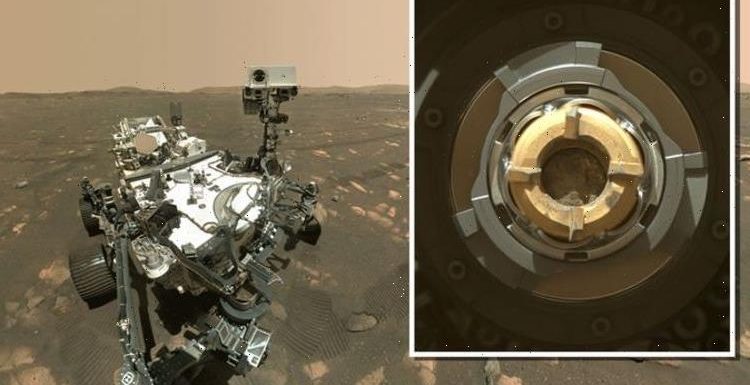
NASA shares sound of Perseverance Mars rover driving
We use your sign-up to provide content in ways you’ve consented to and to improve our understanding of you. This may include adverts from us and 3rd parties based on our understanding. You can unsubscribe at any time. More info
True to its name, Perseverance drilled into the planet and extracted a rock core a month after its first failed attempt. Data and images beamed back to Earth from Mars show the aftermath of the rover’s attempt as well as the picture-perfect core stored in the rover’s drill. Perseverance is now scheduled to take more snapshots of the rock core, with NASA’s scientists potentially selecting it as the mission’s first official sample.
Jennifer Trosper, project manager at NASA’s Jet Propulsion Laboratory (JPL), praised the major accomplishment.
Perseverance is the fifth NASA rover to land on Mars but it’s the first mission focused primarily on the hunt for alien life.
Scientists believe Mars once boasted a climate reminiscent of a young Earth, with a hot and humid atmosphere and water on the surface – the perfect conditions for microbes to evolve.
And if life did evolve on Mars, NASA hopes Perseverance will find evidence of it in ancient Martian rock.


Ms Trosper said: “The project got its first cored rock under its belt, and that’s a phenomenal accomplishment.
“The team determined a location, and selected and cored a viable and scientifically valuable rock.”
However, there was a slight hiccup in the process when the Mars rover attempted to snap additional photos of the rock core.
Using its onboard Mastcam-Z instrument, the captured photos were too dark to be analysed.
According to NASA, it was a simple matter of snapping the images in poor sunlight.
Ms Trosper said: “We did what we came to do. We will work through this small hiccup with the lighting conditions in the images and remain encouraged that there is a sample in this tube.”
NASA Perseverance rover: First images and sounds revealed
If the rock core is approved by the space agency’s boffins, it will be sealed inside of a secure sample tube.
A key aspect of the Mars 2020 mission is the collection and retrieval of rock samples from the planet’s surface.
Perseverance marks the first phase of the mission and will collect and safely store the samples in a specific location.
NASA will then launch the second phase of the mission, landing another robot on Mars that will retrieve the samples and launch them back to Earth.
Although still in the development stage, these promise to be the very first samples of Martian rock to be studied on Earth.


The rover will also deposit sample tubes filled with Martian air.
Ken Farley, Perseverance’s project scientist at Caltech in Pasadena, California, said: “By returning samples to Earth, we hope to answer a number of scientific questions, including the composition of Mars’ atmosphere.
“That’s why we’re interested in an atmospheric sample along with rock samples.”
Perseverance’s first attempt at collecting a rock core failed as the sample proved too crumbly and disintegrated to dust.
Jessica Samuels, the surface mission manager for Perseverance at JPL, said: “The sampling process is autonomous from beginning to end.
“One of the steps that occurs after placing a probe into the collection tube is to measure the volume of the sample.
“The probe did not encounter the expected resistance that would be there if a sample were inside the tube.”
Since landing in Mars’s Jezero Crater in February this year, the plucky rover has travelled nearly 1,500ft (455m) to a ridge known as the “Citadelle”.
Vivian Sun, one of the mission’s scientists at NASA’s JPL, said: “There are potentially older rocks in the ‘South Séítah’ region ahead of us, so having this younger sample can help us reconstruct the whole timeline of Jezero.”
Source: Read Full Article